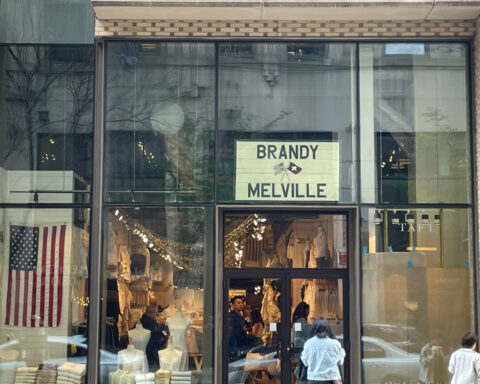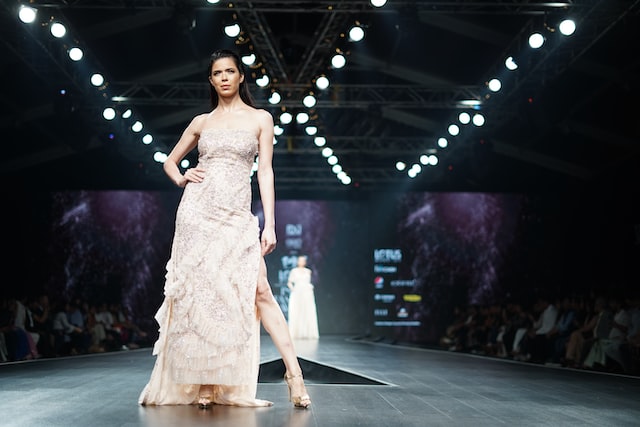
Just one scroll through social media these days and you’ll see fashion styles like ‘Barbiecore’ or ‘kidcore’ or that one that we all know and love: ‘cottagecore’. But how did we get to a place where every new fashion aesthetic is melted down into some derivative of ‘-core’? How did we become so uncreative?
Normcore is widely seen as the ‘-core’ that started it all back in 2013 by K-HOLE, an art collective based in New York. In this report, the collective speaks of a mindset of adaptability versus one of being exclusive. Normcore adherents did not want their style choices to preclude them from hanging out with anyone.
It was also likely a rejection of subcultures like hipsters and Tumblr girls – both of which could be considered early precursors to the TikTok ‘-core’ binge. Normcore generally consisted of, well, normal pieces of clothing like plain t-shirts, straight jeans, and sneakers, to name a few examples.

Fast forward to today, and we’ve got trends flying down from the heavens every five seconds. Let’s look at a few of these trends, as noted by Aesthetics Wiki:
- Witchcore: An aesthetic inspired by witchcraft
- Angelcore: Inspired by angel imagery; not necessarily religious
- Gorpcore: An aesthetic that prioritizes functionality, utilitarianism, and comfort. Outdoorsy types flock to this one.
- Barbiecore: When one wears all hot pink
The list of ‘-cores’ goes on and on, and that’s not necessarily a good thing. On the one hand, the argument could be made that having a massive amount of fashion aesthetics on the market to choose from when getting dressed gives people a way to explore the many different facets of themselves through clothes. That is a valid enough argument; the ‘-cores’ themselves are not the issue.
What is important to make note of, however, is the environmental impact that the tiny trend cycles perpetuated by these ‘-cores’ could potentially have. This warp speed of this trend cycling is sustainably suspect. If you’re constantly deciding that you’re in the mood for a different personality – a different “-core”, if you will – every three days, and you’re switching up your wardrobe accordingly, then what does that do for the environment during a pivotal time for climate change mitigation? How is the environment helped when a new ‘-core’ goes viral (which happens frequently these days) and suddenly everyone is rushing to overhaul their wardrobe? We don’t need to speed up fashion – we need to slow it down.

Building off of the previous argument, how does one afford this constant overhauling of the wardrobe to chase the new ‘-core’ trend(s)? While it is not possible to know the specific financial picture of those engaging in these ultra-small trend cycles, it would be reasonable to assume that not everyone is rich. If we go with that line of thinking, it is likely only possible to engage in these frequent ‘-core’ trends if one is shopping often at fast fashion vendors. And by now, it should be no secret that fast fashion has had a huge role in the marching of our planet over a cliff.
Aside from the fact that this all adds up to be a sustainability nightmare, what does it say that the culture of today is being divided up into an untold number of subcultures? It could say that we no longer have a unified culture. We are no longer united. This can be seen in multiple areas of American society, for example; extreme politics has led the charge. Institutions have been hollowed out. Violence and crime have overtaken public (and sometimes private) life. Our education system is under attack by anti-intellectual forces. This has inevitably led to a society where citizens feel more alone, alienated, and at odds with their neighbors than they ever have.
Without delving further into these issues, the rise of seemingly infinite amounts of fashion subcultures can be looked at as symbolic of the decline of both society and culture. The fashion ‘-core’ subcultures are by no means a cause of this; they are merely a manifestation of a deeper issue, and they carry with them a double-edged sword. Do we want to allow a culture of temporary hits of creativity and pleasure to proliferate, all the while the planet devolves into a place that becomes more and more unlivable for humanity over the next few decades?

Or, perhaps we could stabilize our wardrobes while finding other outlets for self-expression. This doesn’t have to mean a stagnant wardrobe, by any means. It would be beneficial to consider having a base of clothing off of which to build one’s personal style while adding individual trendy pieces if they fit with who we are. This is not a new concept. It is the place from which concepts such as personal style, capsule wardrobes, et al. gain their basis.
If all else fails, there’s always normcore.
To subscribe to Manic Metallic‘s Substack newsletter, click here. To follow us on Bluesky, click here.




